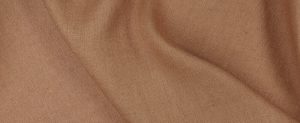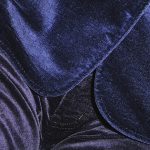FS Colour Series: Power Pink Inspired by Willem De Kooning’s Daring Bravado
Fresh, ripe pinks like that of POWER PINK Linen streak across many of Willem De Kooning’s paintings, creating shockingly bright shards of colour amidst his frenetic expressionist visions. Leader in the American Abstract Expressionist school throughout the 1950s and 1960s, De Kooning’s paintings were often based on women, painted with flurried passages of pink in peach and candy hues that streak across his canvases suggesting energy, movement and life. Though his works became increasingly abstract over time, the same ripe, juicy pinks remained a constant, nestled amongst neutral tones of green, yellow and to make them stand out from the crowd with a daring bravado.
Born in Rotterdam in 1904, De Kooning was a determined and ambitious young man who showed early artistic promise. He took on an apprenticeship with a design firm when he was just 12 years old, while studying night classes at the Rotterdam Academy of Fine Arts. In 1926 he stowed away on a ship to the United States, heading to New York City with the hope of finding the American dream. His first job was as a house painter, which provided him with enough of a steady income to take on a studio and pursue his own practice.
Like many artists in New York, De Kooning found paid work as a public artist through the Workers Project Administration in the 1930s, where he made several large-scale public art murals, and met other ambitious young artists including Jackson Pollock, Franz Kline and Lee Krasner. By the 1940s De Kooning and these contemporaries were developing the Abstract Expressionist style with loose, wild and free brushstrokes, heightened colours and an increasingly abstract language. Within this set De Kooning was often labelled as “an artist’s artist” because his work was so painterly and immediately appealing to his crowd of contemporaries.
Throughout his career De Kooning’s paintings predominantly focussed on female models, which he would paint with streaks and swipes of thick, impasto paint to convey frenetic energy and movement. Woman and Bicycle, 1952–1953, is a part of his renowned ‘Woman’ series, conveying voluptuous women with crudely applied slabs of paint and broken, Cubist shards of colour, transforming them into strange, otherworldly beings. In this work neutral shades of flesh pink, green and yellow intermingle throughout the centre stage, while a shockingly bright shard of hot pink streaks across the woman’s breast, pulling our eye inwards to the centre and upwards to her grimacing face.
As his ideas developed De Kooning’s work became ever more abstract and expressive, eventually abandoning real world references for a hypnotic, improvised style of abstraction. Sometimes he would mix grit or sand into his paint before applying it on to his canvases, giving it an even greater weight and volume that could project outwards from the flat surface. Colours became more vibrant and daring than ever in these mature works, as if breaking free from reality into an entirely imaginary realm of their own making. But pinks remained a defining feature in many paintings, suggesting the same fleshy physicality of his earlier studies featuring women.
In Untitled (Woman), 1971-74, daring shades of hot pink and fuchsia are smeared across sheets of newspaper in a series of asymmetrical shapes and lines that suggest the solidity of human bodies, but they blur outwards towards the edges as if moving through space. Untitled XII, 1975 also alludes to fleshy forms with sketchy outlines forming curved, soft shapes, but they are reworked and painted over to leave them ultimately unrecognisable and obscure. Colours are dominated here by pale, almost white flesh tones, but it is the streaks of vibrant, dazzling pink in the upper areas that bring electric life into the composition, demonstrating De Kooning’s ongoing obsession with pink.



















































Leave a comment